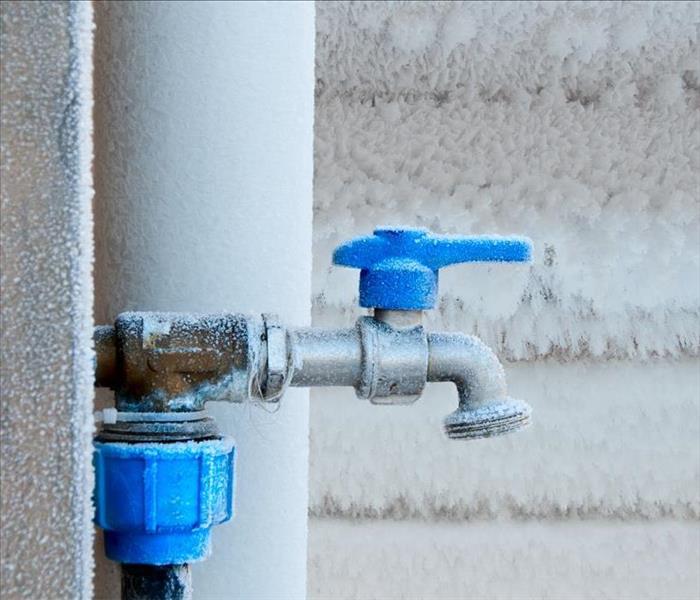Mastering the Cold: Dealing with Frozen Pipes
12/28/2023 (Permalink)
Winter in Layton, UT, paints a picturesque scene with snow-covered landscapes and crisp, chilly air. However, alongside the beauty of the season comes the risk of frozen pipes, a common woe for homeowners in colder climates. As temperatures plummet, pipes can freeze, leading to potential water damage and plumbing headaches. In this comprehensive guide, we'll explore the causes of frozen pipes, preventive measures, and effective solutions to ensure your home stays warm and watertight throughout the winter.
Understanding the Problem:
Before diving into solutions, it's crucial to understand the science behind frozen pipes. Layton, like many areas in Utah, experiences freezing temperatures during winter. When water in pipes reaches the freezing point, it expands, creating pressure within the pipes. This pressure can lead to cracks or even burst pipes, resulting in water damage to your home.
Common Causes of Frozen Pipes:
Insufficient Insulation:
Exposed pipes in unheated areas, such as basements, attics, or crawl spaces, are vulnerable to freezing.
Lack of insulation or inadequate insulation allows the cold to penetrate the pipes, putting them at risk.
Sudden Drops in Temperature:
Drastic temperature fluctuations, especially when temperatures plummet overnight, can catch pipes off guard, leading to freezing.
Neglecting Outdoor Plumbing:
Outdoor faucets and hose bibs are susceptible to freezing if not properly insulated or shut off before winter.
Preventive Measures:
- Insulate Pipes:
Identify and insulate exposed pipes using pipe insulation or heating tape. Focus on areas prone to freezing, such as basements, attics, and crawl spaces.
- Maintain a Consistent Temperature:
Keep your home's temperature steady, even when you're away. A slight increase in the thermostat setting during extremely cold weather can make a significant difference in preventing pipe freeze.
- Seal Leaks and Cracks:
Inspect your home for drafts and seal any gaps in windows, doors, and walls. This not only helps prevent frozen pipes but also improves overall energy efficiency.
- Disconnect and Drain Outdoor Hoses:
Before the cold sets in, disconnect and drain outdoor hoses. Shut off water to outdoor faucets and install faucet covers for added protection.
Dealing with Frozen Pipes:
Despite your best efforts, frozen pipes may still occur. When faced with this challenge, follow these steps to thaw them safely:
- Identify the Frozen Section:
Determine which pipes are frozen by checking for areas with reduced or no water flow. Faucets that produce a slow trickle or no water at all may indicate a frozen pipe.
- Open Faucets:
Before attempting to thaw the pipes, open the affected faucets. This will relieve pressure and allow water to flow once the ice blockage begins to melt.
- Apply Heat: Use a gentle heat source to thaw the frozen pipes. Electric heating pads, hairdryers, or space heaters can be effective. Never use an open flame, as it poses a fire hazard.
- Work from the Faucet Outward:
Start applying heat near the faucet and work your way toward the frozen section. This helps melt the ice gradually and prevents pressure buildup.
- Inspect for Damage:
Once the pipes have thawed, check for any visible damage. Look for cracks, leaks, or signs of weakness. If you notice any issues, it's advisable to consult a professional plumber for repairs.
Dealing with frozen pipes in Layton, UT, requires a combination of preventive measures and effective thawing techniques. By taking proactive steps to safeguard your plumbing and knowing how to safely thaw frozen pipes, you can navigate the winter chill without the worry of plumbing disasters. Remember, a little preparation goes a long way in ensuring a warm and water-filled home during the coldest months of the year. Stay warm, stay informed, and enjoy a cozy winter in Layton!






 24/7 Emergency Service
24/7 Emergency Service
